Established in 2016, the Governor General’s Innovation Awards aim to inspire Canadians to embrace innovation and emulate entrepreneurial risk-takers whose creations have a meaningful impact on our quality of life. In their third year, six awards recognized a doctor whose technology helps give voice to the voiceless, an innovative funding regime for First Nations communities, an internationally acclaimed program that helps children develop empathy, a global early warning system for dangerous infectious diseases, cutting edge technology used to treat the Ebola virus, and a team whose dedication to identifying a rare gene mutation is now saving lives.
Tom Chau
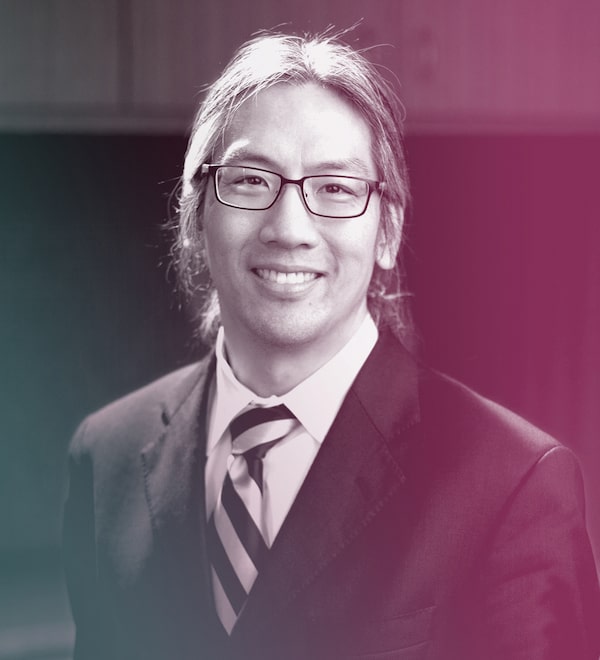
Tom ChauWilliam Suarez Photography
Location: Toronto
Innovation: Technologies to help children and non-verbal individuals overcome communication obstacles
After the birth of his first child in the nineties, Tom Chau marvelled at the miracle of holding a healthy baby. He’d been working at IBM as a technical consultant but realized he wanted to put his engineering skills to use bettering children’s well-being.
It took some hustling, and a post-doctoral fellowship from The Hospital for Sick Children, to make it happen. He quit his job at IBM and began two decades of research on children’s accessibility and communications. Dr. Chau is now vice-president of research at the Holland Bloorview Kids Rehabilitation Hospital – the largest hospital of its kind in Canada – and a professor at the Institute of Biomaterials and Biomedical Engineering at the University of Toronto.
Some of the 48-year-old’s work has focused on physical accessibility, including patented prosthesis technology that lets amputees move prosthetic limbs in comfortable, natural ways. But he and his team at Holland Bloorview have become widely known for their work in childhood communications. Their most well-known project, the Virtual Music Instrument, was previously recognized by the Governor General’s Meritorious Service Cross. The therapy, for children and other individuals with complex disabilities, helps to enhance their expressiveness by letting them “play” music through movements and gestures tracked by a camera.
Brain-computer interfaces are the latest focus for Dr. Chau’s team. By measuring changes in a person’s brain-signal patterns through an electrode cap, for instance, they’ve created an interface that allows the person to answer a “yes” or “no” question simply by rehearsing the word in their head. Another brain-interface project the team is working on, Dr. Chau says, lets children control the image of a monkey on a screen in front of them by imagining making the movements themselves; this is similarly done by detecting the brain-signal patterns behind the movement.
This kind of research could give disabled children better chances to communicate and interact with the world. It also could serve as the bedrock of future innovation around brain-signal technology. Dr. Chau’s team recently hired a director of commercialization to seek out options to license their innovations – a move that would help them better fund their children’s-disability research.
“We believe that being able to express oneself, being able to connect with family, direct your own care and participate in your environment – that’s a fundamental human right,” Dr. Chau says. “Youth deserve the opportunity to exercise that right.”
— Josh O’Kane
First Nations Finance Authority
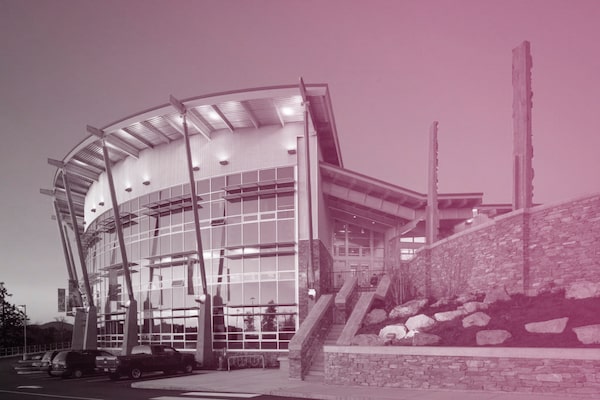
Songhees Wellness Centre
Location: Westbank, B.C.
Innovation: An innovative funding regime that cuts borrowing costs and provides interest-rate certainty for First Nations communities
The elementary school on the Siksika Nation, an hour east of Calgary, first opened in 1963, the pride of the local community. But the school eventually became rundown and overcrowded. One recent winter, longstanding problems with the boiler, pumps and pipes forced the school to close for a month. The Siksika Nation had for years sought funding from Ottawa for a new school but never got to the top of the list. Local leaders then turned to the innovative First Nations Finance Authority, based in Westbank, B.C.
The First Nations Finance Authority operates under the federal government’s 2005 First Nations Fiscal Management Act. The authority is a hub for Indigenous financial strategy, and co-ordinates low-cost, long-term borrowing with bonds sold through Canadian banks to investors. The first bond, rated investment-grade and worth $90-million, was issued in June, 2014.
Siksika Nation’s interminable wait for much-needed money was over. The nation in 2015 borrowed $18-million, one of a number of Indigenous groups that gained funding as the First Nations Finance Authority added $50-million from investors on top of the first $90-million. The new Chief Crowfoot School opened for the 2016-17 school year.
“They built it on time and on budget – under their control,” says Ernie Daniels, CEO of the First Nations Finance Authority. “It’s a beautiful school. It addresses their needs, and their culture.”
First Nations looking for money to invest in their communities, from civic infrastructure to industrial projects, could previously turn to Ottawa, and wait, or seek out higher-cost loans from commercial banks. Meanwhile, Canadian municipalities have long tapped the bond market, where interest rates are more attractive. The First Nations Finance Authority has changed the equation – and investors have warmed to the opportunity. At first, many investors were wary about how they’d be paid back. Now, they are digging into details about what’s being built, and demand for the bonds has spiked. Last fall, the First Nations Finance Authority sold $126-million of debt, at an interest rate of about 3 per cent, and drew investors from outside North America. Mr. Daniels said there was almost enough demand to borrow twice as much.
— David Ebner
Mary Gordon
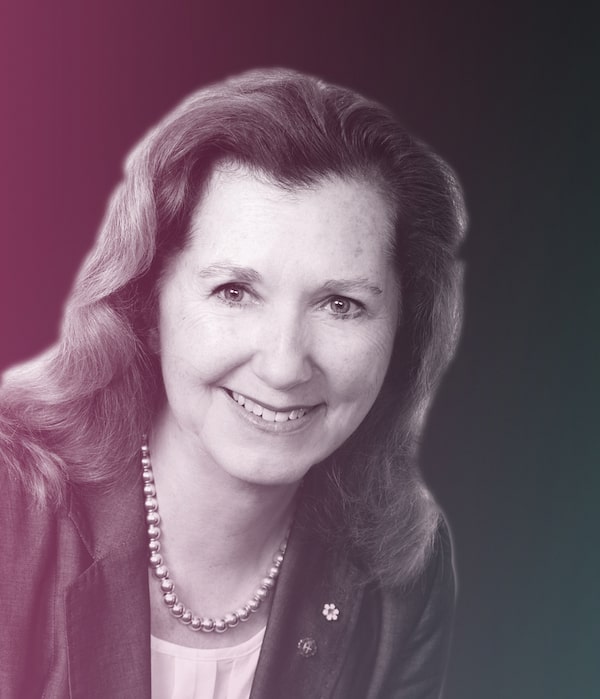
Mary Gordon
Location: Toronto
Innovation: Roots of Empathy, a program aimed at reducing aggression and bullying among school-aged children
Mary Gordon is the founder and president of Roots of Empathy, an internationally acclaimed learning program for elementary school children that began in Toronto.
Ms. Gordon founded the program 22 years ago after observing that the cause of most violence stemmed from a lack of empathy. The format involves a Roots of Empathy instructor and an infant, usually between two and four months old, who enter a classroom to help children aged between five and 13 develop emotional awareness of others. Over 27 scheduled visits, the children learn to care for the baby and make behavioural observations, teaching them how to acknowledge the feelings of others.
“If we don’t learn how to relate to one another, we will have a failed society,” said Ms. Gordon. “If we want to have peace in the world, we have to have children who have the capacity for empathy, who can take perspective, and who have the ability to feel with other people.” For Ms. Gordon, watching the children become more sympathetic to their peers over the school year is the most rewarding part of the process.
Roots of Empathy has been shown to reduce aggressive behaviour, such as bullying, in school-aged children, while increasing social and emotional understanding that can lead to increased sharing, helping, and inclusion. The Roots of Empathy curriculum has been translated into four different languages and is used in 11 countries, including the United States, Germany, Costa Rica and Wales.
Although her program is now widely received, Ms. Gordon remembers the initial challenge of finding parents willing to bring their baby into a classroom. But with the program’s increased popularity, mothers began to tell Ms. Gordon that they were actually planning their pregnancy so that their child would be the appropriate age to take part in the program.
Roots of Empathy is based on scientific concepts and experience, a combination that Ms. Gordon believes is the most beneficial in tackling social problems. In response to winning the Governor General’s Innovation Award, Ms. Gordon said, “To me, it’s a win not just for the work we’re doing, but it’s a win for social entrepreneurs generally, who are attacking intractable social issues.”
— Jennifer La Grassa
Kamran Khan
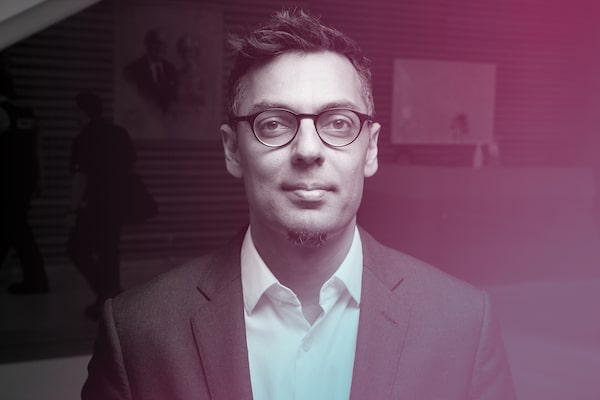
Kamran Khan - Toronto Governor General's Innovation AwardsJaclyn Atlas
Location: Toronto
Innovation: A global early warning system for dangerous infectious diseases
Kamran Khan had just returned to Toronto from studying infectious disease and public health in New York 15 years ago when the city was hit with its infamous SARS outbreak. Forty-four people died. “As a clinical scientist starting my career, I had a realization that the world had never seen anything like this before, but that this won’t be the last time,” he says. “And that next time, we’re going to need to be smarter.”
Through his work as a clinical scientist at St. Michael’s Hospital and as an associate professor at the University of Toronto, he spent the next decade studying global disease outbreaks, how they spread, and how scientists can generate insights from past outbreaks to prevent or mitigate future incidents. In 2013, he founded BlueDot, which generates insights from big-data sets – ranging from anonymized commercial-flight data to information about mosquito populations – to get information about the spread of disease into the hands of global decision-makers.
While academics have long delved into the spread of infectious diseases, Dr. Khan says that the lengthy process of getting scientific papers published means they usually arrive well after governments and public-health organizations need to make crucial choices – like, say, when the World Health Organization released an advisory against non-essential travel to Toronto during the SARs outbreak.
BlueDot’s 50 employees are building a global early-warning system for infectious diseases that, the 48-year-old Dr. Khan says, is capable of tracking threats across the world as they occur. Twelve countries, he continues, currently use its web-based application that helps them assess the risk of disease spreading. Artificial-intelligence methods such as machine learning and natural-language processing help the company sort through endless, ever-growing data sets and news reports to keep on top of disease movements. The company is also working on a consumer-focused app.
As a result, the company has been able to predict flu spreads globally, and track outbreaks of diseases such as Ebola and Zika. “It’s taking a planetary perspective on infectious diseases, whereas in the past, we’ve focused on national events,” Dr. Khan says.
Canada, he says, is incidentally a smart place to generate this kind of research, because of its highly mobile, multicultural population. ”We’re so deeply connected to the rest of the world socially, culturally and economically,” he says. “But we are now linked to health threats from all across the world.”
— Josh O’Kane
Gary Kobinger and Xiangguo Qiu
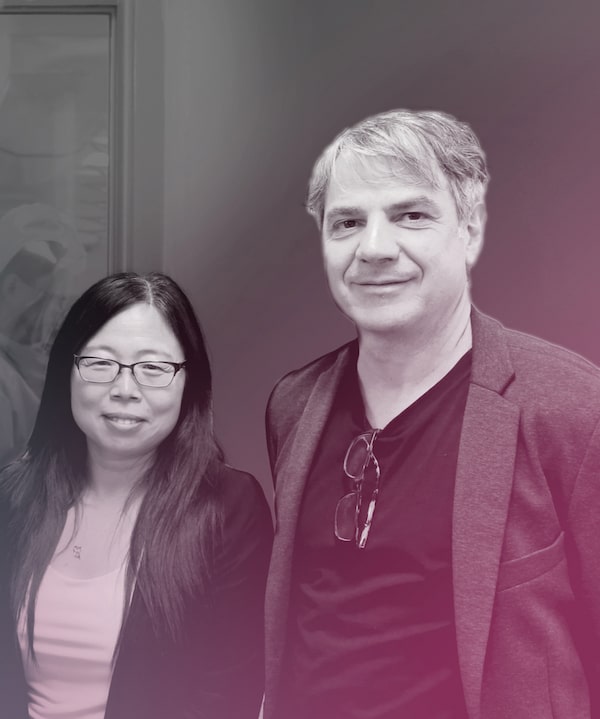
Xiangguo Qiu and Gary Kobinger
Location: Winnipeg
Innovation: An Ebola virus therapy that uses the patient’s immune system to fight back
Following the U.S. anthrax attacks in the wake of 9/11, experts in infectious disease began to voice fears that a weaponized strain of a dangerous microbe might one day be unleashed on an unsuspecting public.
At the National Microbiology Laboratory in Winnipeg, Xiangguo Qiu was working off the beaten track in a quest for something the world urgently needed: an effective treatment for Ebola. Her approach involved monoclonal antibodies, proteins engineered to recognize and fasten onto the deadly virus, shutting down its ability to proliferate in the host’s body. Previous efforts had failed and many experts considered the approach a dead end.
Gary Kobinger, another scientist based at the Winnipeg lab, disagreed. His own research suggested a host’s immune system can fight off Ebola when given a chance to do so. An injection of the right antibodies might buy time for the body’s natural defenses to work.
When budget cuts threatened Dr. Qiu’s work in 2010, Dr. Kobinger, who by then was leading the lab’s special pathogens program, knew it was time to put her findings to the test. Following positive results with rodents, the team administered a cocktail of antibodies to monkeys who had been infected with Ebola. The monkeys survived.
Today their work, in combination with discoveries in other labs, has led directly to the emergency Ebola therapy known as ZMapp. The first human test came during the 2014 Ebola outbreak when two American aid workers infected with the disease were given the drug. Both recovered, pulled back from the brink of death. Results from a clinical trial conducted the following year suggest the drug works, but with the outbreak already waning it was too late to prove this.
While both Drs. Qui and Dr. Kobinger have moved on to other aspects of Ebola research, the ZMapp story continues. The World Health Organization is currently seeking approval to administer the therapy in the Democratic Republic of Congo in an effort to hold back the current outbreak there.
Dr. Kobinger, who has since moved to Laval University, left for the Congo on Tuesday to help trace the outbreak’s origins. He said it was teamwork that allowed him and Dr. Qui to advance their original work ahead of other teams around the globe.
“We were so fast and in-sync when we were in thinking about how to move those antibodies forward,” he said. “It’s like a rock band. The individual musicians may be great but not as magical as when you put them together.”
— Ivan Semeniuk
Memorial University of Newfoundland Research Team (Terry-Lynn Young, Sean Connors, Kathleen Hodgkinson, Daryl Pullman)
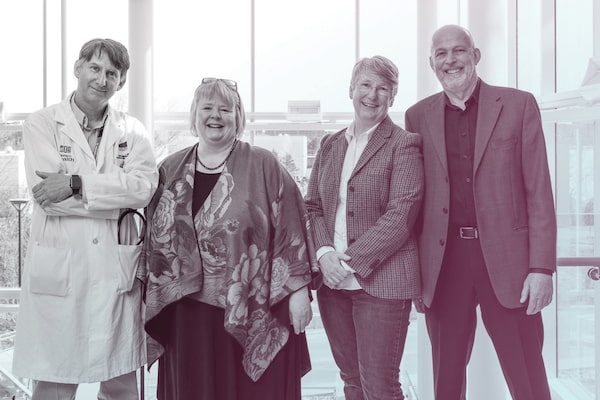
MUN Research Team from left to right: Sean Connors, Kathleen Hodgkinson, Terry-Lynn Young, Daryl Pullman.RICH BLENKINSOPP
Location: St. John’s, Newfoundland and Labrador
Innovation: Identified a lethal gene mutation that led to life-saving screening methods and preventive treatments for a cardiac disease
In January 2004, Terry-Lynn Young, then a newly hired assistant professor of molecular genetics at Memorial University in Newfoundland, got a phone call from the hospital morgue. On the line was Kathleen Hodgkinson, a genetic counsellor and epidemiologist who had been trying for nine months to get Dr. Young to help her identify the cause of a cardiac disease that is unusually common in Newfoundland and that has led to hundreds of premature deaths. Dr. Young, who had recently returned to her native province from the United States, already had her plate full of research commitments. But she agreed to come to the morgue when Dr. Hodgkinson called.
There, she found Dr. Hodgkinson together with the provincial coroner standing on either side of a steel table. On the table was a human heart, one side healthy-looking and muscular, the other side diseased and fibrous.
“This is the heart of a 42-year-old man who dropped dead in front of his two kids over the weekend,” said Dr. Hodgkinson. “Are you going to take this project on or not?”
With tears running down her cheeks, Dr. Young said she would. Together with Dr. Hodgkinson, clinician Sean Connors and medical ethicist Daryl Pullman, she commenced a needle-in-the haystack search that would ultimately encompass 25 family trees going back a dozen generations in search of a genetic link behind the disease, known as arrhythmogenic right ventricular cardiomyopathy.
Working with hundreds of DNA samples and case histories the group had to distinguish between unrelated forms of heart disease and account for the many pathways that a culprit gene can take through an interrelated population. Every promising lead had to be second-guessed.
“As soon as you make an assumption that’s incorrect on a gene hunt you’re lost — you’ll never find it,” said Dr. Young.
By the spring of 2007 the team had their answer. One change in a single letter in the DNA code was the common link between all those who had died. For the first time, families living under the spectre of the disease were given the chance to know who among them is at risk. Since then, many who carry the telltale variation have received implantable defibrillators that can keep their hearts beating when the disease strikes.
“I think that the really good thing about this is that the research is directly linked to clinical care,” said Dr. Hodgkinson. “It’s all to the aim of helping families and patients.”
— Ivan Semeniuk